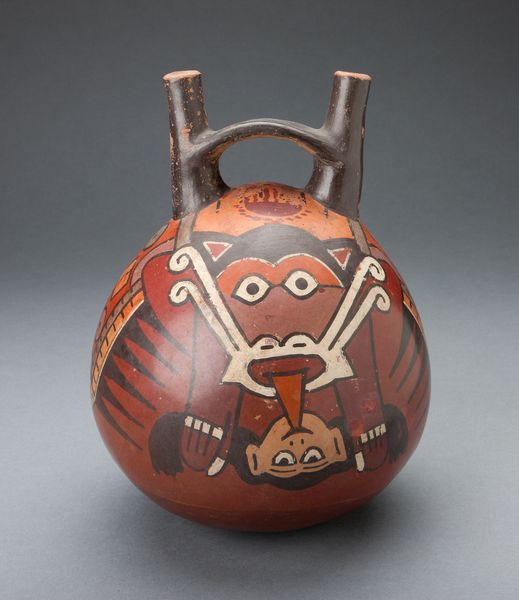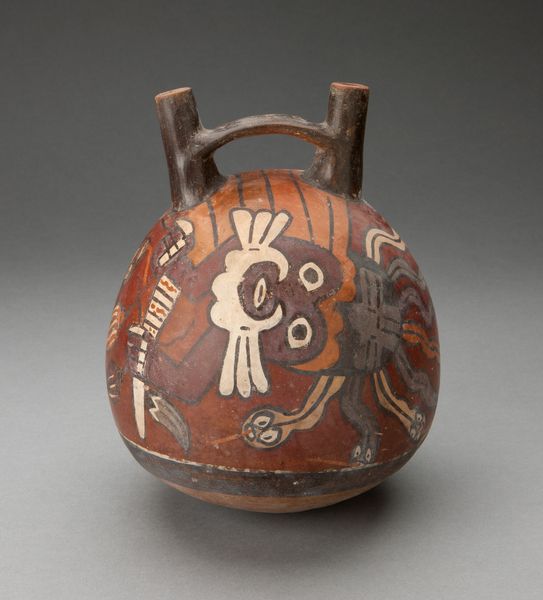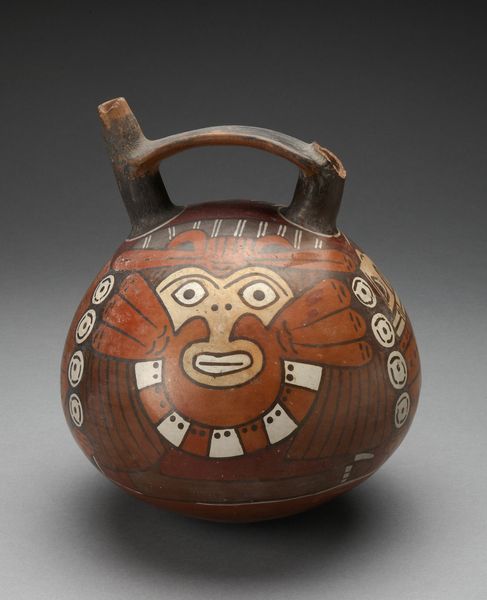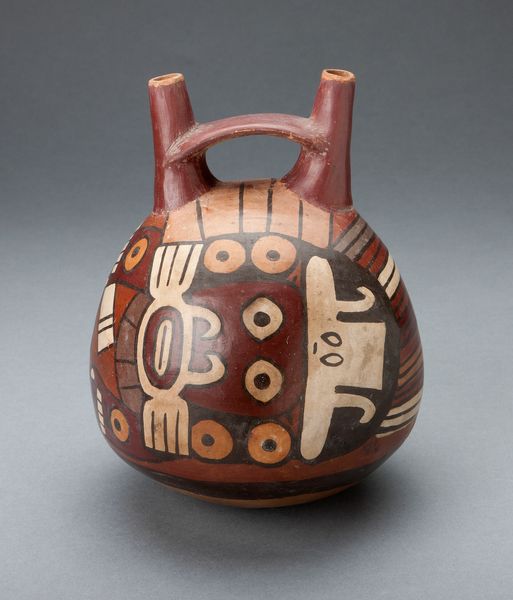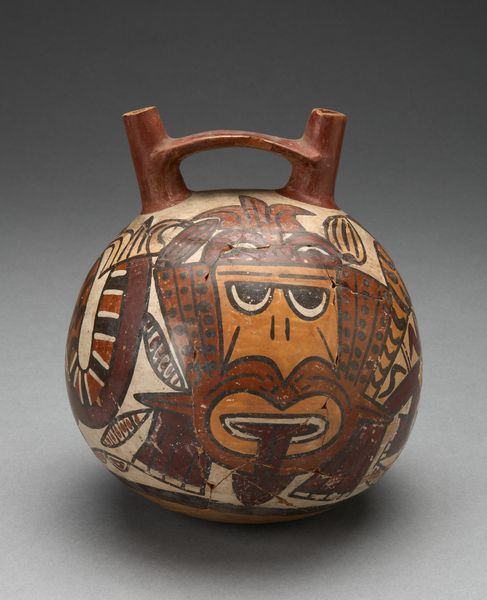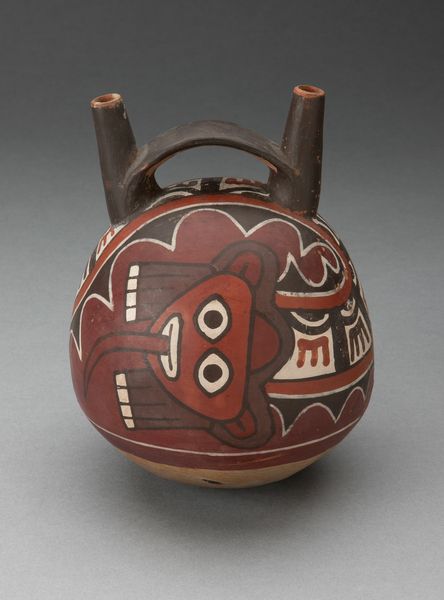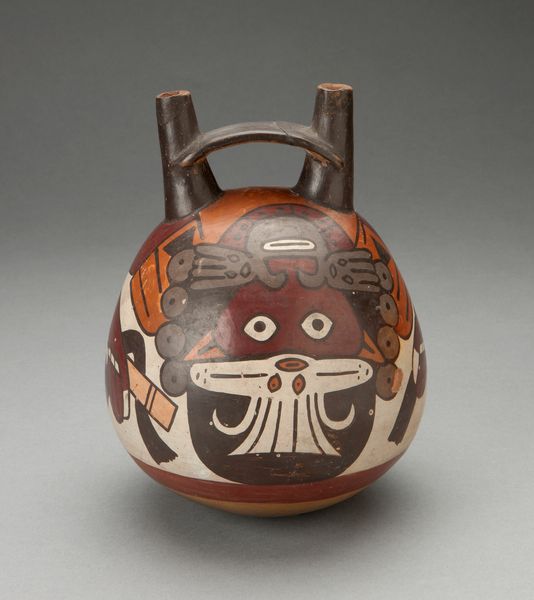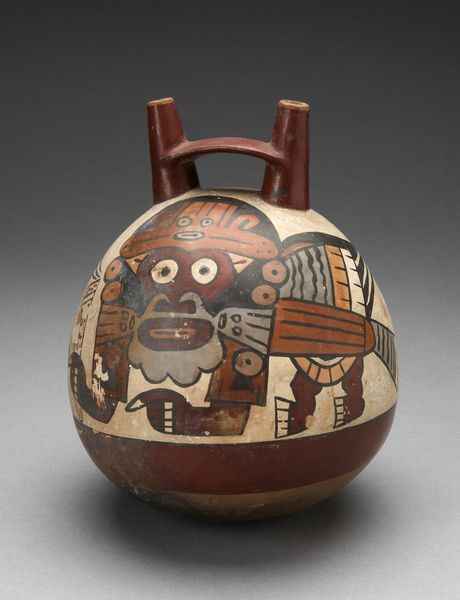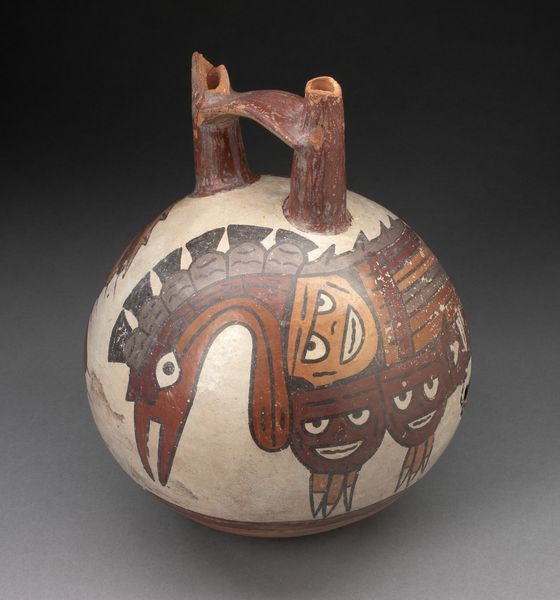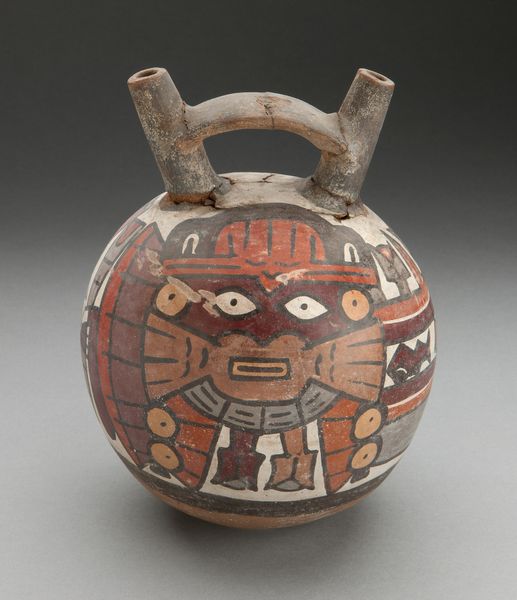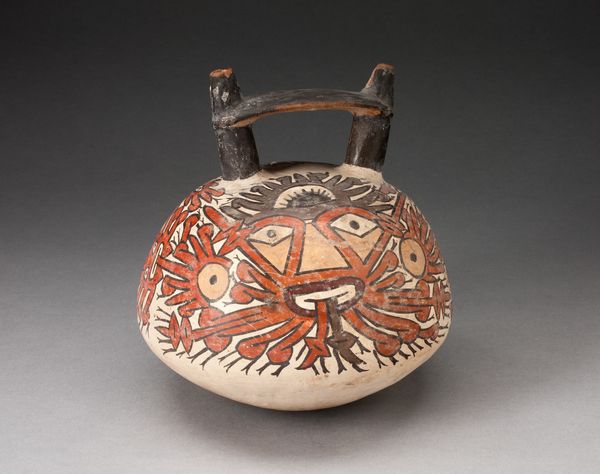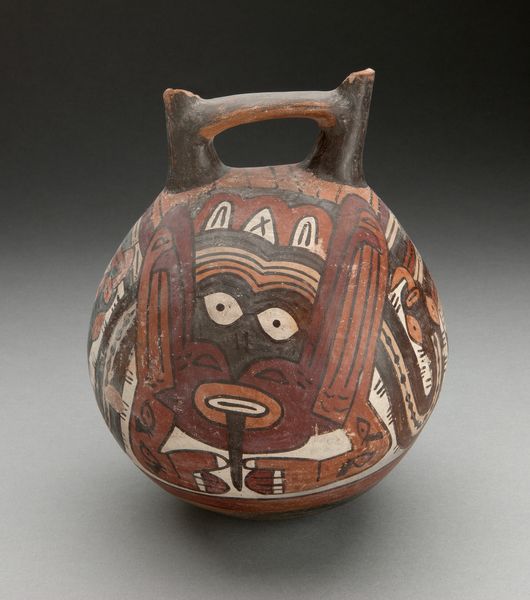
ceramic
#
ceramic
#
figuration
#
ceramic
#
indigenous-americas
Dimensions: 18.6 × 14.8 cm (7 5/16 × 5 13/16 in.)
Copyright: Public Domain
Curator: What strikes me first is this intense gaze – those wide, white eyes seem to bore right through you. Editor: This ceramic vessel, crafted by the Nazca people sometime between 180 and 500 AD, and now residing here at the Art Institute of Chicago, isn’t simply decorative. Its design—specifically that striking figure—speaks volumes about ritual and power dynamics within its cultural context. Curator: You know, the first thing that popped into my head was how it resembles a bizarre kind of, uh, spirit animal? It's fierce but also kind of comical, with that exaggerated tongue sticking out. Editor: Indeed, but consider the potential semiotics here. The “spirit animal” aspect you sense could stem from its purpose—the masked performer. It's probably a representation intended to connect to realms beyond the mundane, to embody transformative forces, or to appease powerful entities. Curator: Transformative forces—I like that. I’m thinking shapeshifting, letting go. Imagine pouring water from it, a sacred offering, releasing the persona along with the liquid. Editor: The mask and ritual performance is so central. The mask provides a space to both disguise and reveal, speaking about cultural ideas surrounding identity and the possibilities available within socially-prescribed structures. Masks have been used around the world as objects of identity negotiation. Curator: Negotiating identities—yes, it must’ve been such a freeing expression. Being able to let go of the every day self... like stepping into a second skin. Editor: More than “second skin”, consider that for many societies of the ancient world—the Americas and elsewhere—performance was a way to make palpable what otherwise might’ve been understood only in symbolic terms. Here in this artwork we have an object that testifies to the performative aspect of that process. It’s almost like holding tangible social dynamics within your hands. Curator: Well, regardless of all the context and critical theory we could project onto this jug—because it’s a liquid vessel right? Its magic, for me, will always be how this very grounded earth-ware transports us beyond earthly constraints. Editor: For me, seeing an object such as this is exciting for its own internal properties but is even more enthralling when its unique existence sheds new light on humanity’s endless attempt to negotiate identities through a culturally embedded perspective.
Comments
No comments
Be the first to comment and join the conversation on the ultimate creative platform.
